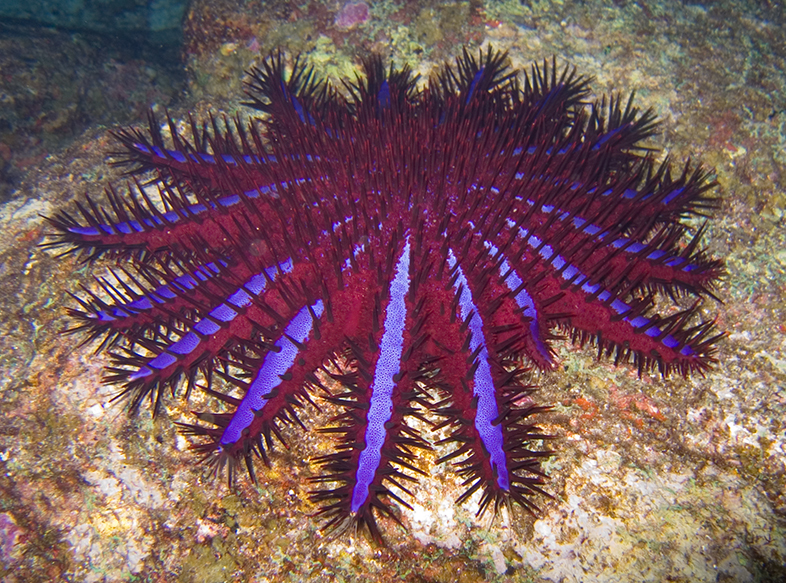 |
| Crown-of-thorns starfish |
Normally, the fact that crown-of-thorns starfish prey on coral wouldn't be such a bad thing. Every animal has its prey, and every animal has its predators. That's how life is. However, the natural balance of life can be thrown off when non-native species invade with few predators to keep it in check. This has been the case with these starfish for the past several years. When they spawn, many juvenile crown-of-thorns can be carried to distant reefs by the sea. They then continue to grow into adults, causing an outbreak of starfish and massive destruction to local coral reefs. Researchers are attempting to determine exactly why these outbreaks occur but have not yet come to a definitive conclusion.
Apparently, the part of the Great Barrier Reef that we will be observing later in the year is currently on the verge of a crown-of-thorns outbreak. Terrifying though they may be, I still think that it will be very interesting to be able to observe these starfish in person. I am also very curious to see if and how the research station we will be staying at disposes of these nasty buggers.
Apparently, the part of the Great Barrier Reef that we will be observing later in the year is currently on the verge of a crown-of-thorns outbreak. Terrifying though they may be, I still think that it will be very interesting to be able to observe these starfish in person. I am also very curious to see if and how the research station we will be staying at disposes of these nasty buggers.
No comments:
Post a Comment